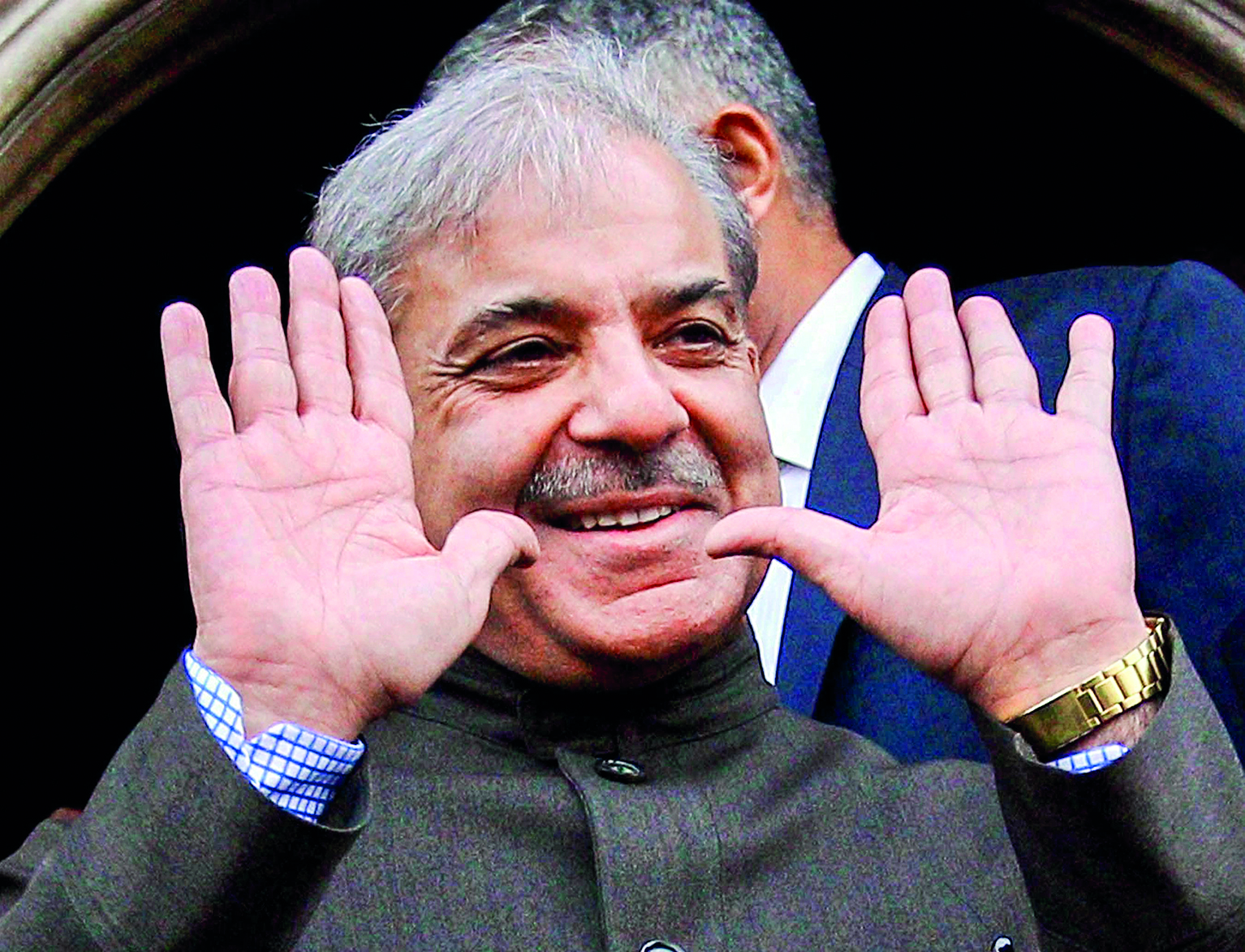Shehbaz Sharif becomes Pak’s PM for 2nd term
Vows to revive ailing economy; to secure G20 membership by 2030

Shehbaz Sharif on Sunday became the prime minister of Pakistan for a second time to lead a coalition government after he comfortably won a majority in the newly-elected Parliament amidst sloganeering by the Opposition.
Shehbaz, the consensus candidate of the Pakistan Muslim League-Nawaz (PML-N) and the Pakistan Peoples Party (PPP), clinched 201 votes in the 336-member Parliament, surpassing the 169-vote threshold required.
His rival, Omar Ayub Khan of the incumbent Pakistan Tehreek-e-Insaf (PTI), managed to secure only 92 votes. National Assembly Speaker Sardar Ayaz Sadiq formally declared Shehbaz as the 24th Prime Minister of Pakistan.
Shehbaz’s oath-taking ceremony is scheduled for Monday at the Presidential mansion, Aiwan-e-Sadr. However, the path to his re-election was not without hurdles. The parliamentary session was marked by chaos as PTI-backed lawmakers shouted slogans of ‘Azaadi (freedom)’ and Qaidi #804’, a reference to the incarcerated Imran Khan. Some of the PTI-backed lawmakers also held posters of Imran Khan.
In response to the pro-Imran slogans, PML-N lawmakers shouted ‘long live Nawaz’ and waved wristwatches at the opposition benches — referring to the Toshakhana corruption case against Khan.
This victory marks Shehbaz’s return to the helm of Pakistan’s leadership, having previously served as Prime Minister from April 2022 to August 2023. Following the February 8 elections, where the PML-N fell short of a clear majority, Shehbaz emerged as the linchpin of a coalition government, backed by various parties including the PPP, Muttahida Qaumi Movement (MQM-P), and others.
In his victory speech, Shehbaz promised a comprehensive overhaul to lift the nation out of its pressing debt crisis and secure G20 membership
by 2030. Acknowledging the critical role of economic stability, Shehbaz highlighted the enormity of the task ahead, with the country grappling with a budgetary deficit exceeding one trillion rupees and burgeoning circular debts in sectors like energy and gas.
Shehbaz outlined a multifaceted strategy to address these challenges, including the abolition of outdated regulations, the establishment of export zones in collaboration with provincial governments, and initiatives to support the agriculture sector, such as subsidies for farmers and a solar tube well program.
Furthermore, he vowed to combat corruption and inefficiencies plaguing state-owned enterprises, such as Pakistan International Airlines (PIA), while promoting investment and economic growth.
Emphasising the importance of collaborative efforts across provincial boundaries, Shehbaz articulated his vision of cohesive national development, aiming to mitigate inflation, foster employment opportunities, and stimulate economic prosperity.
While acknowledging the arduous journey ahead, Shehbaz exuded confidence in the nation’s ability to overcome obstacles and emerge as a resilient and prosperous entity on the global stage.
Born in September 1951 in a Punjabi-speaking Kashmiri family in Lahore, Shehbaz did his graduation from the Government College University, Lahore.
His family emigrated from Anantnag in Kashmir for business and settled in the village of Jati Umra in Amritsar district, Punjab at the beginning of the 20th century before moving to Pakistan.
Shehbaz, who looked after the sprawling family business, hit the political scene in the late 1980s when he was elected as a member of the Punjab Assembly in 1988.
Shehbaz served as chief minister of Punjab from 1997 to 1999, when his brother was serving his second term as prime minister but fell out with the military.
Following General Pervez Musharraf’s coup in 1999 toppling the Nawaz Sharif government, Shehbaz along with the family spent eight years in exile in Saudi Arabia after striking a deal with the then-military ruler.
The family returned to Pakistan in 2007. Shehbaz wore the hat of Punjab chief minister for the second term in 2008 and he won the same slot for the third time in 2013.
After then-prime minister Nawaz Sharif was disqualified from holding office in 2017 in the Panama Papers case, the PML-N appointed Shehbaz as its president.
Shehbaz also showed himself as an astute politician when he served as a leader of the opposition from 2018 to 2022 after the PML-N lost to Khan’s PTI in the 2018 polls.
It was once again quite a tough period for the Sharifs, as the elder Sharif was convicted in two different cases of corruption, along with his daughter, and jailed. Shehbaz himself faced several cases of corruption and was kept behind bars for months.
However, Shehbaz kept his cool and made arrangements to send his brother, who was languishing in jail, to London for medical treatment.
Fighting on the legal and political fronts, he painstakingly waited for his day, which came faster than expected due to the folly of then-premier Imran Khan, who picked a fight with the powerful establishment.
Following a series of cataclysmic events, Khan was shown the door through a no-confidence vote in Parliament in April 2022.
Shehbaz was then picked as a consensus candidate for the prime minister’s post to lead the coalition of over a dozen political parties.
His tenure as Prime Minister from April 2022 to August 2023, though brief, saw economic challenges and diplomatic manoeuvring. Despite being unable to replicate previous successes, he navigated a delicate political environment, securing an International Monetary Fund bailout and facilitating Nawaz Sharif’s return from exile.



